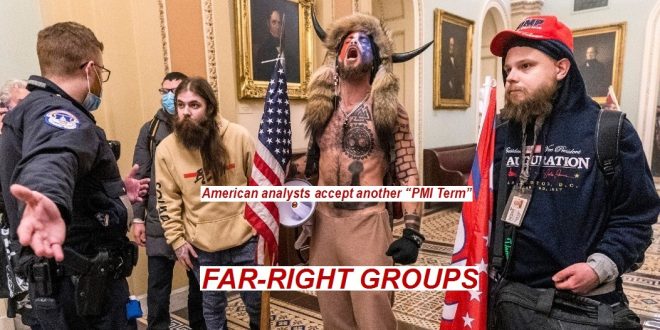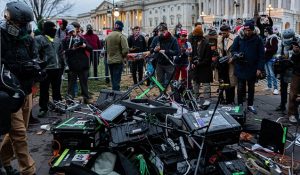10-01-2021
By SJA Jafri + Agencies
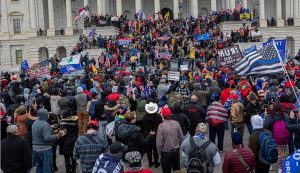 WASHINGTON/ NEW YORK/ HOUSTON: Top American critics and analysts have not only accepted the term “White Terrorist” which has been introduced and written first time by Press Media of India (PMI) almost two years ago but now the same term is now being used American and Western media after strong criticism, sources revealed.
WASHINGTON/ NEW YORK/ HOUSTON: Top American critics and analysts have not only accepted the term “White Terrorist” which has been introduced and written first time by Press Media of India (PMI) almost two years ago but now the same term is now being used American and Western media after strong criticism, sources revealed.
The right-wing riot at the United States Capitol on Wednesday and President Donald Trump’s acknowledgement, after weeks of disputing November’s presidential election results, that a transfer of power would occur has been seen by some analysts as the end of trump’s right-wing era.
The groups of rioters that breached the building in support of Trump and his 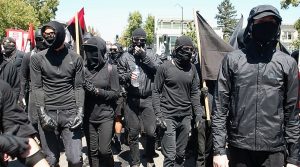 false allegation that the presidential contest was stolen through voter fraud was met with widespread condemnation but one expert says far-right groups and white nationalists in the US view the takeover of the Capitol as a new beginning to be celebrated.
false allegation that the presidential contest was stolen through voter fraud was met with widespread condemnation but one expert says far-right groups and white nationalists in the US view the takeover of the Capitol as a new beginning to be celebrated.
“White nationalists and other far-right groups are celebrating what happened at the Capitol,” Cassie Miller, a senior research analyst with the Southern Poverty Law Center (SPLC) who tracks the far right, told media.
“They are already using images of insurrectionists in the chambers as propaganda and insisting that we’re watching the start of a revolution,” Miller said.
The far right previously saw Trump’s election in 2016 as the beginning of a revolution.
Trump claimed victory to cheers from a resurgent white nationalist movement redubbed the “alt-right”, led in part by Richard Spencer’s National Policy Institute.
Spencer frequently argued publicly for white nationalism in 2017. He was sometimes joined by white nationalist Tim Gionet, known as “Baked Alaska” online, who was present at the Capitol riot.
Spencer and other groups, including the Proud Boys, were instrumental in organizing the “Unite the Right” rally in 2017 in Charlottesville, Virginia.
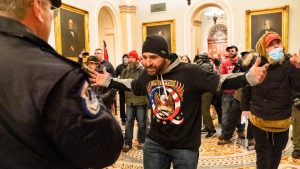 Trump famously said there were good people on “both sides” of the demonstration, which saw anti-racist Heather Heyer killed by far-right James Alex Fields Jr, who drove his car through a crowd of counter-protesters.
Trump famously said there were good people on “both sides” of the demonstration, which saw anti-racist Heather Heyer killed by far-right James Alex Fields Jr, who drove his car through a crowd of counter-protesters.
The deadly events caused a backlash, leading to cancelled speaking events for Spencer and other far-right figures, as well as an increasingly active “Antifa” counter-protest movement.
By 2018, the Proud Boys, who describe themselves as “Western chauvinists” who support Western culture but are considered a hate group by the SPLC, were organizing protests that often turned violent across the country.
Arrests
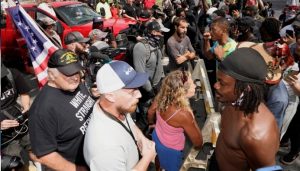 The Proud Boys promised to be at the pro-Trump January 6 rally in the US capital “in record numbers”, according to social media posts from the group’s leader, Henry “Enrique” Tarrio.
The Proud Boys promised to be at the pro-Trump January 6 rally in the US capital “in record numbers”, according to social media posts from the group’s leader, Henry “Enrique” Tarrio.
Tarrio was arrested prior to the pro-Trump rally by local police and charged with a misdemeanor for burning a Black Lives Matter banner during a pro-Trump demonstration in December demonstration.
He was also charged with two felony counts of Possession of a Large Capacity Ammunition Feeding Device and ordered to leave the city ahead of the protest.
Meanwhile, other far-right figures were arrested in relation to the US Capitol 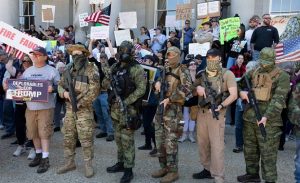 riot, including the founder of “Proud Boys Hawaii”, Nick Ochs, who was arrested for breaching the Capitol after he returned to Hawaii, Forbes reported.
riot, including the founder of “Proud Boys Hawaii”, Nick Ochs, who was arrested for breaching the Capitol after he returned to Hawaii, Forbes reported.
QAnon
One of the most striking images from the Capitol riot is of Jake Angeli, the shirtless, horn-wearing “Q Shaman”.
Angeli has been seen since 2019 at the Arizona Capitol building, where he espouses ideas disseminated in the belief set of QAnon, a conspiracy theory that claims Trump was selected to defeat a “Deep State” cabal of liberals who harvest children’s blood.
On Saturday, the US Attorney’s Office for the District of Columbia said Angeli, 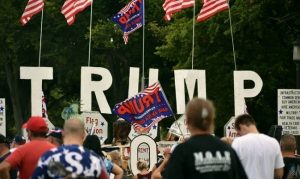 who is also known as Jacob Anthony Chansley, was arrested and charged with knowingly entering or remaining in a restricted building or grounds without lawful authority.
who is also known as Jacob Anthony Chansley, was arrested and charged with knowingly entering or remaining in a restricted building or grounds without lawful authority.
He was also charged with violent entry and disorderly conduct on Capitol grounds.
The QAnon conspiracy theory gained popularity after it emerged on the fringes of the internet in 2017. People wearing QAnon clothing and bearing placards showing their support for the conspiracy were first seen at Trump campaign events in 2018.
QAnon has seeped into the US political mainstream.
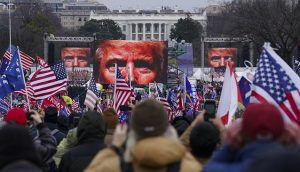 Several congressional candidates voiced support for the conspiracy in the 2020 election cycle, including Representative Marjorie Taylor Greene, who won her Georgia contest with 74 percent of the vote.
Several congressional candidates voiced support for the conspiracy in the 2020 election cycle, including Representative Marjorie Taylor Greene, who won her Georgia contest with 74 percent of the vote.
Pennsylvania State Senator Doug Mastriano appeared on a QAnon talk show where he “pushed violent rhetoric” ahead of the pro-Trump demonstration that led to the riot, according to media watchdog group Media Matters.
Mastriano was also present at the pro-Trump demonstration before people breached the Capitol. He has faced calls to resign, but Pennsylvania Republicans have said there is “no cause” to make him step down.
More protests, violence
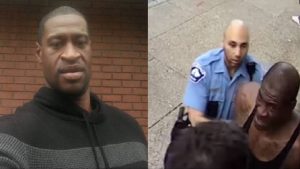 Alex Kaplan, a senior researcher with Media Matters, told Al Jazeera that while QAnon’s future is uncertain, its impact goes beyond the internet. “We do know that QAnon is not just an online conspiracy theory and its offline harms have already been extensive,” Kaplan said.
Alex Kaplan, a senior researcher with Media Matters, told Al Jazeera that while QAnon’s future is uncertain, its impact goes beyond the internet. “We do know that QAnon is not just an online conspiracy theory and its offline harms have already been extensive,” Kaplan said.
The level of integration between QAnon and far-right groups like the Proud Boys remains unclear but the far-right movement that supports Trump has been emboldened by recent events, Miller at the SPLC said, and activists are using Trump’s election loss to argue that “violently dismantling democracy” is the only way to achieve their goals.
“Violent insurrectionary fantasies are standard fare in the far-right, and now they permeate Trump’s base,” Miller said. “There is no way to instantly demobilise this movement, and we can therefore likely expect more mass demonstrations and violence.”
 Pressmediaofindia
Pressmediaofindia
